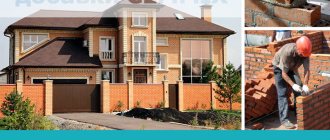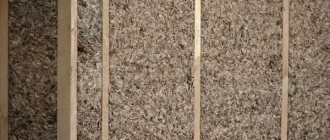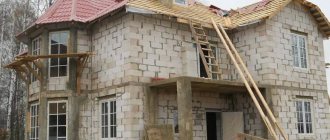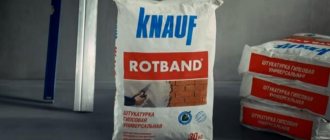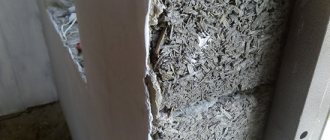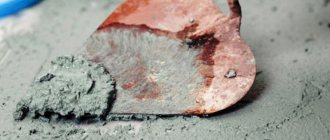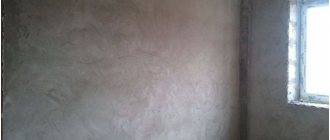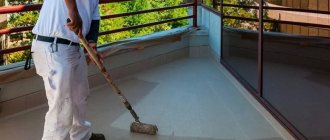On trading floors, plaster for stoves and fireplaces is presented in a wide range of compositions and brands. Let's consider the features of each component that are used for factory or self-preparation of the solution. As well as classic time-tested recipes.
Example of finished products Source sogonkom.com
Why do you need to plaster a stove?
Any oven is based on a frame made of metal, bricks or clay. Fireplaces, unlike stoves, are also made of stone or concrete. All of these materials have different thermal conductivity and coefficient of thermal expansion, unequal service life, and differ in aesthetic properties. If the structure is not covered with a layer of finishing material on top, it can quickly lose its strength and attractiveness.
Without plastering or another type of finishing, over time the masonry joints will begin to crack. The same thing happens with the clay walls of the oven - a network of cracks appears on them, which will have to be covered regularly. The absence of a plaster layer leads to the penetration of smoke and soot through cracks and their settling on the walls of the house and furniture, which spoils the environment and pollutes the air.
Other purposes for which it is recommended to use stove plaster:
- increasing the strength of the entire structure and its resistance to destruction;
- optimization of heat transfer and improvement of thermal insulation;
- increasing the safety of using the stove;
- ensuring the tightness and durability of the masonry;
- giving the structure a neat, neat appearance or changing the design of the stove to suit the new interior.
As for decorative fireplaces, their plastering is carried out primarily for aesthetic purposes. Typically, marble plaster for the fireplace, Venetian plaster or composition with the “travertine” effect are used. If the fireplace has an exhaust system and is actually used to heat the room, modern heat-resistant plasters are used for its cladding, which have many advantages:
- ease of application, low consumption;
- increased fire safety, non-flammability;
- high adhesion to any materials;
- increasing the heat capacity of the fireplace, long-term heat retention.
Fireplace finishing with marble plaster
Briefly about the main thing
The problem of how to plaster a stove to prevent it from cracking can be solved in different ways, using various compositions based on cement, clay, gypsum, asbestos or lime.
The main requirements for leveling materials: elasticity, heat resistance, safety, mechanical strength and low thermal expansion.
The plastering itself is carried out in two ways: a reinforcing mesh made of steel or fiberglass is attached to the walls, or environmentally friendly fibers are added to the solution.
The consistency of the prepared mass depends on the purpose: roughing and grouting - liquid, leveling - like cottage cheese, for installing profiles - thick. At the same time, at each stage of work it is important to comply with the permissible standards regarding the layer. Enlargement causes improper drying, flaking and cracking.
Features of mixtures for plastering stoves and fireplaces
Not every building mixture is suitable as plaster for a stove. It must meet a number of requirements, otherwise it will quickly become unusable, since it is operated in extreme conditions. There is a large temperature difference inside the furnace and on its surface during combustion, and after cooling there is a sharp temperature drop. As a result, the plaster regularly expands and contracts, and in the absence of certain properties it begins to become covered with cracks.
Only special heat-resistant plaster with high elasticity will not deteriorate from such operating conditions. The material should easily withstand temperature changes, adhere securely to the base and not crumble. It is important that the heat-resistant plaster is environmentally friendly, without the admixture of toxic components, drying oil, or oil paints. When heated, harmful substances will decompose and have a negative effect on the body of residents.
Heat-resistant mixtures are used for finishing fireplaces and stoves
Advantages and disadvantages
One of the main advantages of heat-resistant plaster is its affordable cost, although due to the reinforced composition it will be a little more expensive than conventional building materials. But it has much more advantages:
- Good adhesion to any substrate;
- Resistance to cracking due to thermal expansion;
- Fire safety;
- Environmentally friendly (if the composition does not contain asbestos fiber).
This material has the only drawback - it is undesirable to use it as a finishing material. And although this is possible in principle, a boring gray color will require at least whitewashing the leveled surface, or better yet, covering it with tiles or decorative stone.
How to plaster a stove without cracks
In order for the plaster coating of the furnace to serve for a long time and not give shrinkage cracks, it must adequately respond to the process of expansion of the furnace when heated. Of all the compositions existing on the construction market, several types of clay-based products meet this requirement. In addition to clay of a certain fat content, gypsum is suitable for this purpose, but it is used much less frequently, since it also cracks without the introduction of certain additives. It is better to use gypsum as an additional binder in a ready-made clay mortar to speed up its setting and drying time.
In addition to gypsum, asbestos fiber is used as additives to clay. It helps make the plaster more flexible and durable, resistant to moisture and fireproof. This component can be added to any oven finishing product, regardless of its other composition. Instead of asbestos fiber, cheaper straw chaff is sometimes used.
Fireproof compositions for plaster
Clay-sand mixture
The most inexpensive and popular mortar for plastering stoves is clay-sand. The main raw material - clay for plaster - can be collected independently and completely free of charge if there is a quarry nearby. The main thing is that it is clean, without debris, grass, roots and other impurities. Typically, 2 parts sand are added to 1 part clay; if desired, 1/10 part asbestos is added.
The finished plaster is quite plastic, easy to apply to surfaces, and can be easily repaired if damaged. The mass is considered practically waste-free, because it can be removed, soaked and reapplied. The plaster is non-flammable, 100% environmentally friendly, and vapor permeable.
The thermal conductivity of the mixture is low, so it retains the heat of the oven for a long time. The clay hardens quite slowly, which allows you to work with it without much haste (this is very important for beginners). The disadvantages of this type of mixture for plastering stoves include the need to apply a fairly thick layer. If it is less than 1 centimeter, it will gradually fall off.
Cement-clay-sand mixture
This fire-resistant plaster has a more complex composition, but the finished coating is even stronger and more reliable. First, cement is mixed with sand (1:4-1:8), mixed well and paste-like clay is added until the mass of the desired consistency is obtained. This type of plaster is less easy to install than regular clay plaster, but lasts longer. To further enhance its strength characteristics, 1 part of liquid glass is added to the composition. As a result, the plaster layer will not be susceptible to cracks at all.
Lime-clay-sand plaster
Adding lime to a clay-sand mortar provides increased adhesion, strength, ductility, as well as resistance to cracking and biodeterioration. Usually, to make plaster, slaked lime (1 part) is added to the finished clay-sand composition (2 parts). To improve properties, it is allowed to introduce 1/10 of asbestos fiber. The use of such plaster will be even more effective if, instead of ordinary clay, it is made on the basis of fireclay, which is obtained by firing kaolin at a temperature of about +1500 degrees with further grinding.
Self-preparation of the solution
Heat-resistant plaster can be prepared from the following materials:
- cement is used to increase the strength and adhesion of the mortar, you need to take a little of it;
- clay is the main ingredient responsible for thermal conductivity, it should be relatively dry and non-greasy;
- sand is used to increase strength;
- lime acts as a plasticizer; it is prepared in advance;
- fiberglass or asbestos is used if it is necessary to achieve high strength with thick layers.
Heat-resistant plaster is mixed in different proportions . The simplest and most effective DIY preparations are:
- For 2 parts sand take 1 part clay and 0.2 parts asbestos;
- 2 parts sand, 1 part lime, 1 part clay, 0.1 part asbestos;
- 2 parts sand, 1 part clay, 1 part cement and 0.1 parts asbestos.
Valera
The voice of the construction guru
Ask a Question
When preparing the mixture, you first need to grind the clay and add water to it. Leave to infuse for 24 hours, then drain off the remaining liquid. After adding the remaining ingredients, mix thoroughly using a construction mixer. If the plaster is too dry, add water. The finished product is passed through a sieve.
Popular ready-mixes
In construction stores you can find ready-made plasters, sold in the form of dry construction mixtures and ideal for finishing stoves:
- Plaster for stoves and fireplaces “Pechnik”. It is fire-resistant up to +600 degrees, made on the basis of clay, sand, cement, gypsum, mineral and polymer additives. Has low consumption - only 1 kg/1.4-1.5 sq. m.
- Plitonit "Superfireplace Fireproof". Suitable for plastering stoves and fireplaces made of brick, since it is close to this material in terms of thermal expansion coefficient. Made on the basis of clay, cement and heat-resistant fibers. Characterized by high moisture-holding capacity.
- The Terracotta mixture is heat-resistant. Mineral plaster based on kaolin clay with a smooth texture, applied in a layer of 2.5-8 mm. Terracotta plaster can withstand heating up to +400 degrees, so it is excellent for finishing and leveling stoves, fireplaces, barbecues, and barbecue areas.
- Modeling plaster TSP-4. Contains mineral granules 0.5-1 mm in size, designed specifically for plastering stoves with the last (finishing) layer. Ideal for thin layer finishing. Withstands heating up to +200 degrees. It is highly resistant to cracking due to the presence of liquid glass.
- Plaster for fireplace KODRU. It is not afraid of heating up to +1270 degrees, does not shrink and does not crack. Due to its high elasticity, it is suitable for any heated areas, including stoves, fireplaces, and pipes.
Fireproof mixtures for fireplaces KODRU
Finishing the stove with tiles
You can give the stove an attractive look by finishing it with tiles. There are special tiles for stoves that are heat-resistant, but they cost a lot. There are special tiles, but they are laid during the construction of the stove (they cost even more). For the most part, ordinary ceramic tiles are used for stove cladding. If it is of normal quality and laid correctly, nothing happens to it. There are two restrictions:
- use tiles of small formats, as it has been noticed that they hold up better;
- do not use gypsum-based tiles - they greatly reduce heat transfer.
A few more technological points that relate to laying tiles near furnace castings and other metal elements. The gap between the edges of the tile and the metal should be about 5 mm. This gap should be left empty, without mortar. It is subsequently laid with asbestos cord, and covered with tile adhesive on top, and grouted. This way, when heated, the metal will not tear or squeeze out the tile.
Example of tiling a stove door
Craftsmen who finish brick stoves advise first plastering the stove. After the plaster has dried, you can glue the tiles using a special heat-resistant adhesive. If you adhere to this technology, then the preparatory stage will be exactly the same as for plastering (described above):
- unstitch the seams by 1 cm;
- nail/weave a mesh;
- we wet the oven;
- Apply and level the plaster.
After the plaster has dried, the tiles are glued using conventional technology. Some craftsmen place the tiles on a heated stove, others - on a warm one. There are styling options without heating. The technology is no different from conventional finishing work, the only difference is that the seams are made larger - from 3 mm and they try to leave them unfilled.
An example of tiling a stove
To maintain the seams, the same crosses are used. They are then filled with gypsum grout, which is more elastic and less prone to cracking. In this case, the seams compensate for thermal expansion.
There is one trick: if the tile format is such that it overlaps several bricks, the glue should be on only one of them. The rest remain empty. The solutions have a high degree of adhesion and hold well even in this situation. And this method allows you to bypass the different magnitudes of thermal expansion of different materials (the seams expand more, which is why tiles glued to two bricks can tear).
But this furnace lining technique has a disadvantage: voids filled with air do not conduct heat well, and heat transfer drops significantly. In this case, there is one way out: buy tiles the size of a brick. It is difficult to find the required sizes, but some craftsmen cut smaller ones from large-format ones, with the required dimensions.
Find or cut tiles to fit bricks
There is a technology that combines the two described above. The stove is lined with masonry mesh with 50*50 mm, wire diameter 0.5-1 mm. They nail the mesh with staples - powerful ones from a construction gun, or using finishing nails. The mesh should fit tightly. The tiles are laid on this base without prior plastering. The disadvantage of this technology is the high consumption of expensive glue.
What tile adhesive can be used in this technology? The following heat-resistant brands performed normally:
- Plitonite VT;
- Retainer;
- Emelya glue, suitable even for finishing with torn stone;
- Ceresit 17;
- Fireproof;
Torn stone glued to Emelya glue
Homemade oven plaster mortar
If you wish, you can make plaster for the stove yourself. It is only important to properly prepare the clay in advance. The raw materials are soaked in water for 5 days, then washed again, removing any floating debris. Then do the following:
- the water is finally drained, but if there is small debris left in the clay, it is first filtered through a sieve;
- mix the clay until smooth, remove any lumps (they will cause cracks);
- River sand is prepared separately - sifted, washed, dried;
- fluff up asbestos, prepare milk from lime by mixing with water (if these additives are planned to be added to the plaster);
- connect the main components together, add water until you get plaster with the desired texture (like thick sour cream).
Experienced plasterers add table salt to the finished composition - 200 g per bucket of finished plaster. Salt prevents the solution from cracking, slightly slows down the hardening of the mass, and allows the coating to dry evenly. If the stove is heated with coal or peat briquettes, it is advisable to add a little fireclay clay to the plaster, which will give the mixture additional heat resistance.
Types of mortar for plastering stove walls
The stove is one of the building elements that regularly heats up and cools down, so the chosen plaster composition must be resistant to this phenomenon.
Mixtures for preparing plaster mortar are divided into two types:
- Simple compositions that include only two components, sand and clay.
- Complex formulations contain more than two ingredients.
Plastering a stove with clay and sand requires preliminary preparation and cleaning of the materials from various impurities. In particular, sand must be sifted through a fine sieve, clay should be rubbed through a fine mesh to remove roots and small stones.
It is recommended to make the plaster mixture using fatty types of clay, this promotes better adhesion of the solution to the surface. If the clay is too oily, the amount of sand used can be increased.
You need to know how to dilute clay for plastering a stove. To begin with, it should be soaked in a small amount of water and left for several hours, adding liquid in small portions if necessary. The process is repeated until a 10-15 cm layer of water remains above the clay. After mixing the finished clay mixture, the consistency of thick sour cream should be obtained.
In some cases, asbestos, finely chopped straw or fiberglass are added to the mixture for plastering the stove. These reinforcing components make it possible to obtain more durable materials.
When preparing plaster mixtures, special attention must be paid to the environmental side. During the heating process, the materials used should not emit substances that pose a danger to human health and life.
Separately, it should be said about salt; it is also sometimes added to the solution for plastering the stove. It should be noted that the opinion that salt makes it stronger can be considered erroneous. In fact, salt increases the hygroscopicity of clay, making it more flexible and resistant to cracking. Also, a plastering solution, to which a certain amount of salt is added, prevents the proliferation of various insects in masonry joints. For owners of private houses, this fact is of great importance.
Another component that can be added to the plaster mixture is gypsum powder. This material is used as a fixative. However, plaster must be used very carefully, as it hardens very quickly. The initial setting of the solution with the addition of gypsum powder occurs immediately after application, and after 10-15 minutes the surface hardens completely.
Adding lime along with gypsum makes the solution more durable and able to dry in a short time. But when choosing such mixtures, you should remember the properties of gypsum, so it is better to prepare a small portion immediately before plastering the stove. It is very important to understand that it is impossible to dilute the gypsum mixture with water.
Tools for applying plaster
In order to apply the plaster mixture efficiently, prepare all the necessary tools in advance, and during the work process use those that are more convenient to use. They also buy a primer that will enhance adhesion to the mortar and strengthen the masonry, metal corners, tile adhesive, beacons, and some gypsum plaster.
Here is a list of accessories that may be useful to the master:
- trowel, trowel - for applying and distributing the mortar over the surface of the oven;
- spatulas of different sizes - for applying, leveling, smoothing the composition, especially in corners and other hard-to-reach places;
- construction grater, trowel or trowel - for leveling and rubbing the surface;
- brushes and rollers - for painting dried plaster;
- chisel - for making notches on the surface before plastering, if it is too smooth and does not adhere well to the mortar, and reinforcement has not been carried out;
- hammer - for quickly beating off old mortar;
- metal scissors - for cutting reinforcing fabric;
- level and rule (plumb) - for proper leveling of the coating;
- a construction mixer and a suitable container for mixing plaster;
- hard metal brush - for removing old plaster and cleaning joints.
Why do you need to plaster the outside of the fireplace?
First of all, the exterior decoration gives the structure a complete look. When using ordinary red brick for masonry, a folded stove or fireplace does not look aesthetically pleasing. However, beauty is not the only factor in the importance of plastering.
Plaster gives the brick structure a finished look
The need to plaster a brick fireplace or stove is explained by two more important nuances: 1. During combustion, the brickwork of the stove becomes very hot from the fire. A similar process is typical for a fireplace. After the flame goes out, cooling occurs. Temperature changes cause the brick to undergo small movements, during which cracks appear at the seams. The solution gradually pours out, and smoke from the combustion chamber penetrates into the room. The plaster forms an airtight layer that prevents fumes from filling the living room. 2. Stoves in many private houses are built on clay. Insects like to live in natural material in the summer, when there is no need for heating. Plaster acts as a hygienic layer that protects the room from pests. Plaster simply gives neatness to the fireplace or the same stove. Without finishing, the clay solution will gradually spill out onto the floor and spread dust throughout the room.
How to plaster a stove: instructions
Before starting work, carefully prepare the base, because the quality and service life of the plaster layer will depend on this. The walls of the stove or fireplace are freed from the old coating - knock it down with a chisel and hammer. The seams are well cleaned with a brush to remove pieces of plaster and sweep away dust. If the masonry is fresh, remove any adhering and escaped drops of mortar, which can lead to detachment of the new plaster.
The old paint is completely removed. Irregularities and cracks in the bricks are covered up, masonry joints, on the contrary, are deepened by 5-10 mm. If the base is too smooth, small notches are made on it. The walls of the stove or fireplace are primed 2-3 times. The seams are especially well coated with primer.
Reinforcement
If the oven walls are uneven, you will have to apply several layers of plaster. In this case, the frame must be reinforced, otherwise the solution may peel off and crack. Purchase a mesh made of metal or fiberglass with medium-sized cells (1.5-2 cm). The metal material is secured using nails with wide heads, driving them directly between the bricks.
Reinforcing mesh for oven
Fiberglass is attached to a mortar or heat-resistant tile adhesive. To ensure perfect alignment, steel or aluminum corners with perforations are glued to the corners of the stove. In case of sharp unevenness of the walls, plaster is carried out along beacons, which are placed on top of the reinforcing mesh on small piles of gypsum mixture. Beacons are installed according to the level, having previously determined the point of greatest deviation of the plane.
Spray
To properly level the walls, it is necessary that the plaster layer be at least 8-10 mm - this is the only way to get rid of significant distortions. After the mesh is fixed to the surface and the beacons are placed, the oven is heated to a warm state.
Then spray the walls of the oven with water using a wide brush and make a spray. This is the first layer of plaster, up to 4-5 mm thick, which is literally thrown onto the wall. The spray solution has the consistency of medium thick sour cream. After filling the entire area, the plaster is leveled without much effort, but paying attention to the high-quality filling of masonry joints. Allow the composition to dry thoroughly.
Leveling and covering
After the first layer has dried, further work begins. Apply the solution with a spatula or trowel between the beacons, starting from the bottom of each wall, and immediately level it using a small rule. After treating one area, proceed to the next until the entire surface is covered with the solution. Allow the leveling layer to dry, then proceed to covering.
The covering layer is only 1.5-2 mm thick, so the solution for it is made more liquid. It is needed to perfectly level the surface before painting. If you plan to glue tiles, covering is not necessary. As this stage of work is completed, the beacons are removed and the holes are sealed with plaster mixture. The corners are carefully treated with an angle spatula, rounded for your own safety.
Grout
While the surface has not yet completely dried, they begin grouting work. Grinding is carried out with a construction float or matting, not forgetting to regularly moisten the device with water. Move the tool in a circular motion, increasing the pressure in the depressions and decreasing it in the pits. To reduce the risk of cracking of the layer, experienced craftsmen, after finishing plastering work, cover the oven with damp burlap. As a result, it dries more evenly, which improves the quality of the result.
Basic rules for plastering
In order for the plaster to become not only a decoration for your heating installation, but also serve as protection and not crack as a result of using the stove, it is necessary not only to prepare or buy a suitable mixture, but also to perform all the work correctly at each stage. Conventionally, the plastering process can be divided into three main stages:
- Performing spraying;
- Applying a primer layer;
- Covering or final stage.
Perform constant smoothing and leveling of the applied composition.
Fixation on the surface of the mesh provides better adhesion of the composition
Important: when plastering the surface, make sure that the solution lies at the same level. The thickness of the final finishing layer should be from 8 to 22 millimeters.
Advice: if you just recently laid out your stove out of brick, you shouldn’t immediately move on to covering its surface. It is necessary to wait up to 20-30 days and allow the structure to obtain its characteristic shrinkage, and the solution to dry well and harden. If you start finishing the surface immediately after assembling the fireplace, the finishing layer may subsequently completely or partially collapse, crack and completely lose all its performance characteristics and original appearance.
Carrying out reinforcement and applying mortar
After the first stage of work is completed, it is necessary to proceed according to the following scheme:
- Before applying the prepared mixture, thoroughly clean the brick surface from excess masonry mortar, then perform a deep cleaning and deepen all seams;
- Next, a special construction reinforced mesh is installed on the entire brick surface. It is necessary for the subsequent application of the mortar and its uniform fastening and adhesion to the brick;
- For fastening, it is most convenient to use dowels;
Important: for better adhesion, before applying the mixture, heat your unit well and apply a little water to the brick.
- To apply the first and second layers, dilute the liquid mixture separately. Further layers become more dense. To do this, apply the composition to the entire surface, then perform a high-quality leveling;
Make sure that each layer is as even as possible and has the same thickness.
The first two layers should be more liquid than the subsequent ones
Advice: if you see that chips and cracks have appeared on a smooth surface, you need to repair them, then fill them with the prepared mixture and level them.
- At the last stage, it is necessary to allow the composition to dry on its own. To speed up this process, you can cover the walls of the structure with burlap, slightly moistening it with water;
- To give the finish a complete and well-groomed appearance, you will need to apply a finishing layer, before which the surface is sanded.
Applying the composition to a fixed reinforced mesh
Leveling the surface and applying the final layer
Decorative design of the stove
For the final lining of the stove, you can use a wide variety of materials - from inexpensive to luxury. When it comes to a fireplace in a country house, marble, granite in the form of slabs, stones, as well as coils or onyx are often used. The ideal material for fireplaces and stoves is marble, which is not afraid of sudden temperature fluctuations and has a long service life. More economical finishing options include whitewashing, painting, painting or gluing tiles.
Painting and whitewashing the stove
The simplest method of finishing a stove is whitewashing. To carry out whitewashing, prepare a solution of 100 liters of liquid lime and 100 g of non-iodized salt, you can also drop a little blue. A more modern option is to paint the stove with heat-resistant water-based paints. Oil-based paints and varnishes are not used for this purpose - they quickly darken, and can also release toxins when heated. Before whitewashing or painting, the surface of the plastered stove is primed.
Decorative plaster for stoves and fireplaces
Decorative plaster is another easy-to-work and beautiful material that can be used to decorate a stove or fireplace. It is important to pay attention to the quality of the mixture and its suitability for finishing stoves, since not all brands are suitable for this purpose. There are heat-resistant decorative compositions from different manufacturers on sale. Also, instead of specialized products, you can choose plaster for exterior work, which is not afraid of sudden temperature changes.
Mineral-based decorative plasters can withstand high temperatures when heated, with mixtures based on clay or lime being the most suitable. Silicone or silicate compounds are also suitable for the job. As it dries, a layer of paint, varnish or wax can be applied to the decorative plaster.
Tile
To finish the stove after plastering, terracotta or ceramic tiles are often used. It is glued to heat-resistant tile adhesive, which is designed to work with very hot substrates. The usual adhesive composition for tiles will not work - the material will quickly peel off from the stove. There are even special corner ceramic elements on sale that simplify work and make the stove beautiful and stylish.
Finishing the stove with terracotta tiles
What kind of brick is needed for laying a stove - the right choice of material
Ceramic bricks are widely used for the construction of heating stoves in individual residential buildings.
The construction industry produces a wide range of bricks for laying furnaces, but which one to choose from the proposed range? Before we consider this issue, you need to understand the fact that two types of bricks are used for laying the stove - this is a simple ceramic brick, but with certain characteristics, which is used for laying the external elements of the stove, chimneys, and fireproof or fireclay brick, which is used for furnace firebox masonry.
Kiln bricks must meet the following technical requirements:
- Resistant to high temperatures and open flames.
- The ability to accumulate heat and retain it for a long time.
- Sufficient mechanical strength.
- Resistant to significant temperature fluctuations.
Solid fuel stoves are built from ceramic bricks that meet the requirements of GOST 390-96. This standard came into force on July 1, 1997 and establishes the technical conditions that these products must comply with in shape and size. The regulatory document also defines the requirements for the use of products depending on the maximum ambient temperature.
Ceramic bricks intended for the construction of thermal units are subject to more stringent requirements than other building materials. In the firebox of furnaces, the flame temperature can exceed 1000 °C; therefore, its walls are subjected to significant thermal loads. The thermophysical parameters of the material used must be higher than the specified value.
During the operation of the furnaces, they are regularly cooled in some cases to negative temperatures. In this case, the brick is exposed to a significant temperature difference in the external environment, which leads to thermal expansion followed by compression.
The product must have a sufficient strength margin to successfully withstand this phenomenon and avoid deformation and destruction.
The brick used for laying stoves must have sufficiently high thermal conductivity and the ability to accumulate heat.
This allows you to maintain a comfortable thermal regime for a long time.
As we said earlier, a certain type of ceramic brick is used to lay the furnace; now we will look at what main characteristics this brick should have.
Brand by density. The first thing you need to look at when choosing ceramic bricks for a stove is the density grade. The grade of ceramic brick by density is established in accordance with the requirements of GOST 530-2012.
To designate it, an alphanumeric encoding is used, consisting of the letter “M” and a number from 25 to 1000. Please note that this indicator does not indicate the quality of the brick, but only shows its density when pressed. This indicator is important because the denser the brick, the slower it heats up, and therefore the slower it cools.
The fact that the brick will cool slowly is of course good, because
This indicator is important because the denser the brick, the slower it heats up, and therefore the slower it cools. The fact that the brick will cool slowly is of course good, because...
the oven will give off heat for a longer time. But it is more difficult to heat a stove made of too dense bricks, especially when it has completely cooled down.
Balance is important here, so for laying the furnace, bricks with a density not lower than M-150 and not higher than M-250 are used.
Frost resistance. Frost resistance of a product is defined as the ability to withstand a certain number of heating and cooling cycles. This indicator is denoted by the Latin letter F with the addition of a number from 25 to 300. The frost resistance indicator of ceramic bricks is important when constructing external elements of a heating furnace, such as chimneys.
The thing is that this integral part of the furnace is in very harsh conditions of constant temperature changes. This has a huge impact on the brick used to lay the pipe. For the construction of such structures, it is best to use ceramic bricks with frost resistance from F75 to F100.
Thermal conductivity. The thermal conductivity of ceramic bricks will depend on its density and for products used for laying furnaces it should be in the range from 0.59 to 0.72 W/(m×°C).
Fullness. For laying the stove, only solid ceramic bricks are used.
Ceramic stove brick.
Tips for plastering stoves
Professionals point out a number of important nuances that need to be taken into account when facing a stove or fireplace yourself:
- When the structure is heated strongly and regularly, it is important to select a special primer for the job that is heat-resistant. The use of ordinary primers may cause the mortar to detach from the oven.
- Plastering can only begin after some time has passed since the construction of the stove. It is better if it lasts at least 2-3 months, and the stove must be regularly heated throughout this period. This will reduce the risk of the coating shrinking in the future.
- After completing finishing activities, the stove can be warmed up after 3 days, when the coating stops being pressed through with a finger. For the first time, they do not heat at full power, then gradually increase the heating temperature. After heating, the vent is not closed to ensure natural evaporation of moisture from the plaster.
- Whitewashing, tiling or painting of the stove begins about a month after plastering.
General characteristics of heat-resistant adhesives for ovens
The main factor that determines the name of these materials is operation in high temperature conditions, sometimes in direct contact with fire. When used at high temperatures, heat-resistant adhesive must not only resist destruction, but also maintain its functionality.
General requirements for adhesives intended for furnace construction:
- sufficient resistance to high temperatures for a specific purpose;
- safety – absence of harmful emissions into the air;
- sufficient adhesion with high elasticity of the hardened mixture - to effectively neutralize temperature deformations of the furnace materials;
- ease of installation - optimal consistency, durability and curing time.
Repair of stove plaster
If cracks do appear on the stove coating, this means a violation of the plastering technology or improper operation of the structure (overheating, loosening of doors, etc.). In difficult cases, you will have to reposition the stove, but most often, “cosmetic” repairs help. The work is carried out in the following sequence:
- Completely remove old plaster and whitewash from the surface of the damaged area, remove soot, otherwise the latter will appear from under the layer of mortar in the form of rusty spots.
- Cracked bricks are restored with a special repair mixture or the cracks are filled with heat-resistant mastic. If repairs are impossible, the bricks are replaced with new ones, but plastering begins no earlier than after 7 days.
- Apply the primer with a brush and let it dry.
- Prepare the plaster composition and apply it to the area moistened with water by throwing it on. After leveling the solution, rub it with a construction trowel.
- Loose doors are reinforced with wire, and a clay composition is also applied around the fastening area. Let the stove dry.
If the plaster is made correctly, finishing the stove or repairing it can be done with your own hands. The costs of such work will be small, and the savings on wages for invited craftsmen will be significant.
Manufacturers of heat-resistant plaster
Ready-made plaster compositions with heat-resistant characteristics are easy to use.
These products are offered by the following companies:
- "Concord East"
- Plitonit;
- Wolfshoher;
- "Bossnab";
- "Terracotta";
- Vetonit;
- Rath, etc.
Plitonit
The Plitonit company is a German-Russian production facility that produces a range of materials for laying fireplaces and stoves.
In the product line:
- heat-resistant plaster mixtures;
- adhesive bases with heat-resistant characteristics;
- heat-resistant putty;
- compositions with reinforcing components for the construction of fireboxes;
- decorative fire-resistant plasters.
SuperKaminOgneUpor plaster dries within 30 minutes after application. The coating does not crack, is resistant to high humidity, and does not collapse when the structure shrinks. There is no need to wet the brickwork before applying the mixture. The products include modifying additives and fibers with heat-resistant characteristics.
Concord East
The company has been operating on the market since 2000 and produces a range of building materials and paint and varnish products, including those with fire-resistant characteristics.
The company's assortment includes:
- primers:
- water-based, latex and acrylic-based dyes:
- adhesive compositions for different operating conditions:
- ready-made putties:
- oven plasters, etc.
Wolfshoher
The Wolfshoher company (Germany) has official representative offices in Russia. The factory produces stove bricks and materials for finishing stove and fireplace structures. The product line includes adhesive heat-resistant bases, mastics, plasters, putties and primers for ovens.
The materials are high-quality, durable, tested, and presented for different operating conditions. The production is developing improved products for fixing modern finishing materials.
Bossnab
(Russia) produces specialized products for furnace production. The line includes plaster compositions for finishing fireplaces and stoves made of different materials. The range has been supplemented with adhesive bases and primers. Plaster materials are produced in different fractions and differ in operating temperature conditions.
Terracotta
The domestic company produces products for plastering and fixing facing tiles. The product line includes thermally stable mixtures that can withstand heating up to +1300 °C. The products are environmentally friendly, because... contains only natural ingredients. The main raw materials used are kaolin, fireclay powder, sand, and binders. The list of products includes terracotta fireproof putty.
Rath
The RATH company (Austria) has representative offices in European countries and supplies products to the Russian market. The company's product line includes finishing materials with fire-resistant characteristics, oven plaster, putty, and adhesive bases. The products are high quality, durable, tested, but are very expensive.
General rules for carrying out work
Before directly plastering the stove onto the work surface, the following work must be completed.
- The plaster must be stirred to achieve a homogeneous mass and the consistency of thick sour cream.
It is important to remove all contaminants from the working surface of the stove (dust, remnants of the previous plaster that were used when laying the stove). To improve the “grip of the mortar”, you need to clear the masonry seams to a depth of about fifty millimeters
Before application, it is important to heat the oven a little in order to achieve 20–25 degrees of heat; On warm walls, the plaster will lie more evenly, and an excellent level of quality will be achieved.
After all the preparatory procedures, you need to proceed to the main part:
- Additional surface cleaning.
- Treatment of cracks.
- Surface primer.
- Installation of reinforcing mesh.
- Plastering the stove
What are they made from?
Modern fire-resistant plasters usually have a gray tint and have decent performance characteristics. In particular, they are able to withstand relatively mild impacts and other mechanical impacts and not crumble.
And fundamentally, these plasters differ from conventional finishing compositions in the content of heat-resistant components, which allow them to withstand temperatures up to 1200-1700 °C. In this case we are talking about the following components that serve as the basis for plaster:
- aluminous cement;
- cement with silica additive (pozzolanic);
- gypsum;
- glass.
To fill fire-resistant plaster, vermiculite, tripoli, perlite, kieselguhr, materials of volcanic origin, and fibrous minerals are added to its composition. All these are mineral substances that do not burn and do not emit toxic gases when heated. Quartz sand and Portland cement are not used in fire-resistant plasters.
When heated during a fire and subsequent cooling with water, reactions occur that lead to severe swelling and cracking of the plaster. And through the cracks formed, fire can penetrate into the structure.
Surface preparation process
It is important to start work by treating the surface of the oven. If there is old plaster on it, it must be removed
Exposed brickwork must be perfectly clean. You can use a spatula to clean it. The surface must be cleaned carefully, avoiding sudden movements that could damage the masonry.
If cracks are found on the surface, they should be treated with special oven glue.
To treat cracks, the glue is brought to a thick sour cream state, after which the surface must be cleaned of dust using a brush
Then, it is important to moisten the same brush with water and treat the holes. Next, this defect must be treated with glue using a spatula
After all defects have been eliminated, it is necessary to apply a primer mixture to the working surface. An acrylate mixture is suitable, which is capable of penetrating deeply into the material, filling all the pores, and forming a film on the surface.
This will ensure a stronger connection between the primer and putty. The mixture should be applied with a brush and rubbed in. After this, you need to dry the oven, leaving it on for a day.
Features of the problem
Why is it recommended to plaster a brick oven? In terms of increasing the reliability of the entire structure, it is necessary to note the fact that the plastered brick is protected from the direct influence of aggressive bath factors (temperature changes, moisture, steam). The brickwork itself increases the strength and tightness of the seams. The bonding material is less susceptible to cracking. 2 important reason - improved appearance. After plastering, the stove has a smooth wall surface, which gives it neatness and makes it possible to create a specific interior.
//www.youtube.com/watch?v=kXcpeiwD3dw
Brick oven plaster has its own specific characteristics. First of all, this is due to the high temperature on the walls during its operation. The plastered layer must withstand the following influences: prolonged heating and open flame, temperature changes, mechanical influences, smoke and steam, oil splashes during cooking. As the oven heats up, the brickwork tends to expand significantly, and therefore the plaster solution for ovens must have increased elasticity in order to withstand such loads without cracking.
One of the functions of the stove is to heat the room. This condition dictates one more requirement for stove plaster - good thermal conductivity. If additional significant energy is required to heat this layer, then the efficiency of the entire structure will significantly decrease. In addition, when heated, the material used for plaster should not release substances harmful to the human body.
Advice from professionals
To ensure quality work when plastering a stove, professionals recommend:
- Proper mixing of the solution. To do this, you can take a small amount of the mixture and roll it into a ball in your palm. If cracks form on it, you need to add a little water.
- The mixture should be viscous so that it can be easily applied.
- Before starting work, all cracks must be repaired.
- To strengthen the plaster, use reinforcing mesh.
- After plastering, you cannot immediately heat the stove, otherwise the coating may crack. You need to wait until it dries completely.
For high-quality plastering of the stove, the main thing is to mix the solution correctly - it should not be too liquid or thick. Following the instructions will allow you to avoid common mistakes and get a durable and aesthetic lining for your home stove.
